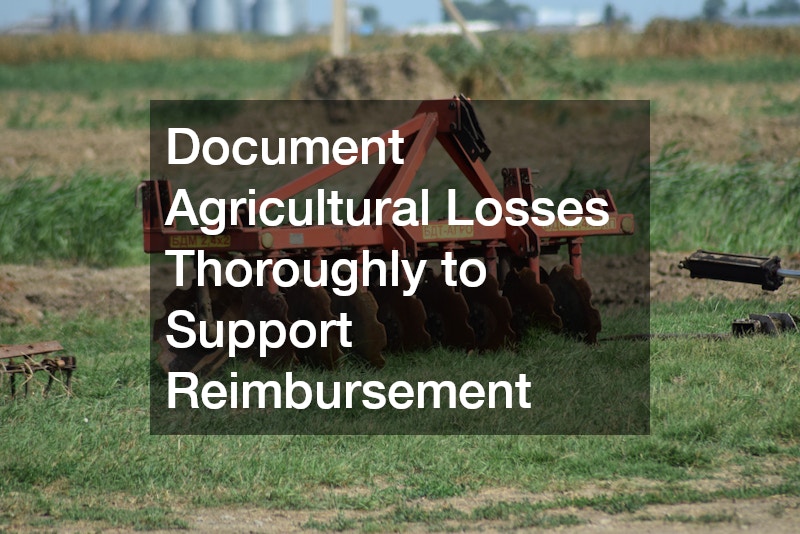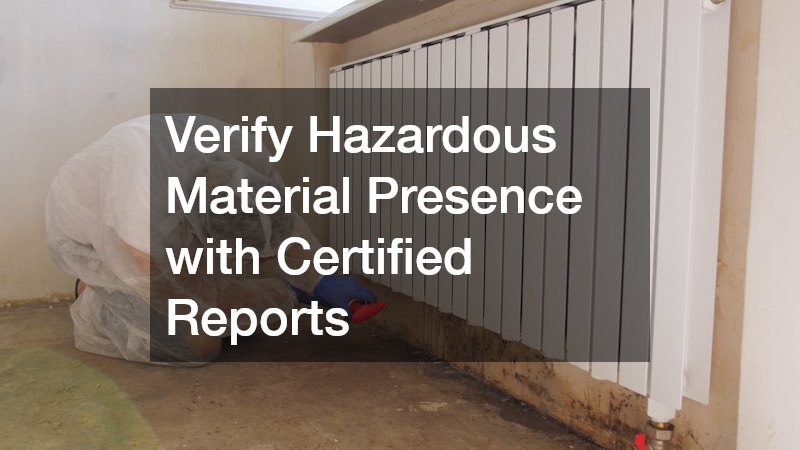Navigating the world of insurance claims can be daunting, especially when it involves documenting losses accurately to ensure timely reimbursements. Whether you’re dealing with environmental challenges, such as agricultural losses, or structural damages from weather-related incidents, thorough documentation is crucial. Crop insurance plans provide financial protection to farmers against losses from crop failures due to natural disasters or declines in market prices. When it comes to filing insurance claims, claims documentation acts as a bridge between the policyholder and the insurance company, ensuring both parties are on the same page. Against the backdrop of severe weather patterns, understanding rain insurance plans can equally ease the burden of unforeseen calamities. Homeowners are often confronted with water-related damages, making it imperative to document issues effectively with the help of a reputable water damage restoration company. In order to navigate the intricacies of insurance claims efficiently, detailed documentation serves as the cornerstone of ensuring that claims are processed smoothly and in accordance with policy stipulations. This article seeks to educate policyholders on how to meticulously document a range of damages, from agricultural losses to asbestos removal, ensuring that claims are accurate and satisfactory reimbursements follow.
Document Agricultural Losses Thoroughly to Support Reimbursement

Managing agricultural losses is vital for farmers relying on their yield as their primary source of income. Crop insurance plans provide a cushion against unexpected losses, making efficient documentation paramount to securing reimbursement. For farmers, accurate documentation involves recording every stage of crop development and any adverse events impacting production.
Detailed photographic evidence and records of farm operations can supplement claims documentation, significantly improving the chances of successful claims. Insurance providers rely on factual data to process claims; therefore, including weather reports, pest infestation logs, or disease records can strengthen a farmer’s case. Regular updates on the field conditions and prompt recording of any irregularities can not only aid in reimbursements but also align with crop insurance plan requirements.
Farmers should collaborate with agricultural experts, if possible, to document the extent of losses comprehensively. These collaborations mean documentation includes time-stamped images, expert evaluations, and other necessary data, meeting insurance policy standards. Such thorough documentation supports farmers in showcasing the full scope of their losses, ensuring a smoother claims process, and fostering trust with their insurance providers.
Track Weather Impacts Accurately for a Smoother Filing Process
Weather-related insurance claims demand precise record-keeping, particularly for those who utilize rain insurance plans. Documenting the impact of weather on property and crops involves more than just noting the damage; it’s crucial to record the specific weather events causing the loss. Claims documentation in such cases should include official weather reports, photographic evidence, and timestamps to validate the occurrence of the weather event.
A comprehensive documentation strategy also involves maintaining a diary of weather forecasts and real-time observations. This approach ensures that any overland water flow or rainfall intensity affecting the property is recorded accurately. It is equally critical to store any news articles or the local community’s reports on significant weather changes as part of claims documentation to further substantiate claims.
Engaging with weather app tools can enhance the precise recording of rainfall or snowfall amounts affecting insured assets. Such proactive documentation minimizes disputes between claimants and insurance adjusters, streamlining the rain insurance plan claims process. In the long term, this diligence assures policyholders of receiving the compensation they deserve, reflecting their actual losses.
Capture Water-Related Damages Clearly to Expedite Claims
Water-related damages not only depreciate property value but also present significant health hazards if left unaddressed. In claims documentation, clarity and detail are key to expediting the fumbling bureaucracy often associated with insurance claims. Collaborating with a reputable water damage restoration company can significantly boost the credibility and comprehensiveness of such documentation.
Professional assessments from a water damage restoration company can demonstrate the extent of damage to insurers. It is prudent to document work done to remediate damages, including photographs before and after restoration, and invoices for services rendered. Such meticulous record-keeping serves as a detailed log for future reference during claims assessment.
Additionally, maintaining lists of damaged assets and descriptions, alongside proof of value such as receipts or appraisals, is essential to support claims. These documents strengthen claims documentation by providing concrete evidence of water damage, helping to get fair resolutions with minimal delays. Adopting a systematic approach to documenting these damages can mean the difference between a drawn-out compensation process and a swift, justified payment.
Record Fire Losses Precisely to Align with Policy Requirements

Fires can cause catastrophic damage, and when they strike, recording those losses with precision is crucial to align with insurance policy requirements. Engaging fire damage restoration services can provide an accurate assessment and help prepare robust documentation. Maintaining a detailed inventory of all property affected by fire is paramount to support claims.
Every claim must be supported with clear documentation, including photographs of the damage, estimates of repair costs, and even salvageable items. Often, working with fire damage restoration services can yield valuable insights into the nature of the fire and the extent of reparable versus total losses. This ensures claims documentation provides a holistic view, aligning with the standards expected by insurers.
Keeping copies of reports from fire departments and restoration companies further bolsters claims, presenting factual groundwork for reimbursement. This complete documentation facilitates a smoother claims process and reassures insurers of the validity and scale of losses. Insured parties should strive for precision in their documentation, as any missing or unclear data can delay or diminish claim settlements.
Include Evidence of Surface Growth to Support Indoor Claims
The presence of mold, mildew, or similar indoor surface growth requires substantial evidence when filing claims. Mildew removal efforts must be documented as part of the documentation, proving both presence and remediation to support indoor claims satisfactorily. Policyholders should make use of inspection reports and service records from professional cleaning or mildew removal companies.
Photographic evidence before and after mildew removal strengthens the claim of damages caused, showcasing what areas were affected and how they were treated. Claims documentation should include a timeline of when growth was observed and steps taken toward resolution to show proactive measures taken by the insured party. This timeline can help illustrate that insured parties are mitigating damages, which may speed up claim approvals.
Encouraging the use of moisture meters and air quality tests during remediation adds precision to claims, satisfying insurers of the full scope of damages. Each step taken in addressing these indoor hazards becomes a tool for showcasing damages’ extent. Such detailed documentation is invaluable, reassuring both insurers and insured parties that claims are backed by rigorous evidence.
Photograph Vehicle Damage Promptly for Faster Payouts
Vehicle damages, such as those from hail, demand immediate documentation for effective claims processing. Hail dent repair can result in costly services; thus, timely and accurate documentation is a valuable aspect of ensuring faster settlements. Taking photographs immediately after the damage occurs is essential to chronicle the incident on a time-stamped basis.
Obtaining estimates from certified hail dent repair services for costs associated with repairs should be included within claims documentation. The inclusion of multiple repair assessments can serve as a robust foundation, painting a full picture for insurers about the extent and costs associated with damages. This process ensures claims are credible and readily processable by insurance companies.
Documentation should also cover any correspondence with insurers about the damage, including chats or emails discussing the claims process. These records maintain a clear communication trail which is useful to verify what has been agreed upon concerning repairs and settlement amounts. Prompt attention to documenting vehicle damage can lead to quicker payouts, ensuring vehicle owners resume normal use without undue financial strain.
Note Exterior Compromise to Validate Storm-Related Reports

Documenting exterior compromises, such as siding wind damage, is essential for settling storm-related insurance claims. Siding wind damage assessments require cautious and meticulous documentation, involving comparisons of pre- and post-storm conditions of exterior surfaces. Inhabiting the role of a diligent observer, the insured should take high-resolution photographs from multiple angles, covering all areas of potential damage.
The claims documentation can be significantly enhanced by drawing on weather reports, corroborating that damage coincided with a reported storm or severe weather event. Enlisting the help of professional inspectors to evaluate the extent of damage adds credibility to the claims, providing independent assessments to back the policyholder’s declarations. Insurers appreciate thorough documentation reflecting legitimate damages, aiding in swifter claims processing.
Collecting repair estimates as part of the documentation not only establishes the damage’s financial impact but also aids in comparing insurer quotes of depreciation or repair costs. Such detailed records empower claimants in disputes, equipping them with evidence demonstrating the validity of their claims. This reconnaissance enhances the chances of claims being processed efficiently and fairly.
Support Indoor Hazard Claims with Proper Documentation
Indoor hazard claims, particularly those involving mold, necessitate methodical documentation to ensure accurate remediation and appropriate compensation. Mold removal companies provide essential services in abating such hazards, and their intervention should be thoroughly documented as part of the claims process. Reports from these services, alongside photographic evidence, construct a compelling narrative of mold’s impact.
Evaluations conducted by mold removal companies serve as authoritative evidence, illustrating the presence of mold and the necessity for remedial action. Documenting affected areas, remediation methods, and preventive measures aligns with claims documentation standards, aiding in clear communication with insurers. This ensures that policyholders can clearly exhibit the extent and cause of mold damage, enabling effective settlements.
A comprehensive documentation process should also include any health inspections or results from air quality tests, underscoring the hazards and further justifying claims. Such details fortify the evidence pool, presenting a well-rounded picture of indoor hazards and their implications. Accurate documentation thus assures both safety for occupants and expeditious insurance dealings.
Detail Smoke Impact to Ensure Proper Compensation
Smoke damage requires adept documentation to ensure claimants receive due compensation. Smoke damage cleaning professionals can assist in detailing the extent of the deterioration, building a robust claim with their evaluations and cleaning records. Including this documentation substantiates claims of smoke-related damages, fulfilling policy mandates for precision and clarity.
Developing claims documentation should incorporate an exhaustive list of all items and surfaces affected by smoke damage. Taking photographs immediately after the incident captures the initial impact and is vital to showcase damage that may not be visible post-cleaning. Documentation from smoke damage cleaning services, listing items cleaned and any special treatments required, greatly benefits the justification process.
Incorporating proof of costs associated with cleaning and restoring damaged items further strengthens claims. Detailed inventories cross-referenced with these costs establish solid grounds for reimbursement, demonstrating the actual financial burden borne by the insured. Taking such an approach ensures equitable compensation and satisfaction in the claims process for smoke damage.
Verify Hazardous Material Presence with Certified Reports

The presence of hazardous materials, such as asbestos, requires careful verification and reporting to facilitate insurance claims. Collaborating with asbestos removal specialists is key, providing certified reports as crucial elements of documentation. These professionals can document both the presence of asbestos and the thoroughness of removal in adherence with environmental and safety regulations.
Record-keeping for asbestos-related claims should include all stages of detection, removal, and disposal, providing a holistic outline of the processes. Such claims documentation reassures insurers about adherence to safety standards while paralleling the documentation needs for these sensitive claims. Including certification from asbestos removal companies renders claims both legitimate and comprehensive.
Having detailed logs about health inspections and the specific measures taken to handle materials safely ensures compliance with legal and insurance requirements. With hazardous material claims, meticulous documentation not only facilitates smoother interactions with insurers but also prioritizes occupant health and safety. Accurate documentation underpins claims with verifiable evidence, ensuring settlements accurately reflect incurred damages and actions taken.
In conclusion, effective claims documentation stands as a pillar in the insurance claims process, crucial for securing fair compensation across diverse loss scenarios. From managing agricultural dangers with crop insurance plans to ensuring thoroughness in claims for smoke damage cleaning, the spectrum of documentation requirements is vast yet manageable. Policyholders are encouraged to pursue detailed and precise documentation practices, be it for mildew removal or asbestos removal, thereby increasing their credibility and facilitating swift claim resolutions. Future challenges, such as environmental unpredictability or structural susceptibilities, necessitate comprehensive records that reflect adherence to policy stipulations and rigorous evidence standards. Each scenario — addressed, supported, and documented — empowers the insured with assured outcomes and fosters trust with insurers. Consequently, the insurance landscape thrives on meticulous record-keeping where claims documentation transitions from mere compliance to a strategic tool for policyholders.


